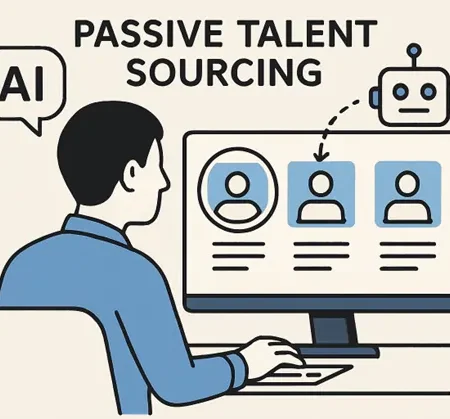Understanding Sourcing Automation
Recruiters today recognize the critical importance of engaging passive candidates—professionals who are not actively looking for new jobs but may be open to the right opportunity. Traditional recruiting methods, heavy on manual outreach and broad networking, struggle to engage this top-tier talent pool consistently. This is where sourcing automation software changes the landscape, equipping organizations with AI-driven solutions that streamline identifying, reaching, and nurturing passive candidates.
Automated sourcing platforms use artificial intelligence and machine learning to analyze large datasets, identify ideal matches, and automate initial outreach. This personalization of communications makes engagement faster and more relevant to candidates’ interests and backgrounds. Predictive analytics enables recruiters to prioritize candidates based on responsiveness and fit, maximizing returns on outreach efforts. Automation reduces administrative work, allowing recruiters to focus on high-value activities. It creates tailored candidate journeys from the first interaction, transforming engagement into a meaningful, data-driven process, boosting conversion rates across recruitment channels.
Benefits of Sourcing Automation in Passive Talent Engagement
- Streamlined Efficiency and Speed: Advanced sourcing tools rapidly process thousands of profiles, distilling pools of candidates down to those most likely to match complex criteria, effectively reducing time-to-hire and recruitment bottlenecks.
- Personalized and Relevant Outreach: Automated messaging platforms deploy customized communications based on individual candidate backgrounds and interests. Tailored outreach increases response rates, setting the stage for stronger candidate relationships.
- Reduction in Hiring Bias: Sourcing automation software objectively assesses skills and experience, minimizing unconscious human bias and helping teams build more diverse, inclusive workforces.
- Enhanced Candidate Experience: Timely follow-ups and consistent communication foster positive brand impressions, encouraging passive candidates to engage or refer others, even if they don’t immediately move.
AI-powered recruitment signals a shift toward a proactive, strategic approach in hiring, moving away from passively waiting for applicants to actively building relationships with talent over time.
Implementing Sourcing Automation: A Step-by-Step Guide
- Define Ideal Candidate Profiles: Establish clear benchmarks for skills, experience, and potential culture fit, enabling algorithms to target the most appropriate talent segments.
- Select Platform Tools That Integrate Seamlessly: Evaluate and choose sourcing automation software aligned with organizational objectives, compliance requirements, and integration capabilities with existing HCM or ATS platforms.
- Automate Workflows for Talent Identification: Configure filters, communication triggers, and scheduling so outreach is timely, customized, and efficient.
- Monitor and Optimize Performance: Track key metrics—such as open rates, replies, conversions, and time-to-hire—to continually refine the automation strategy for best results.
Real-World Impact: A Case Study
A mid-sized technology company facing challenges in recruiting for specialized engineering roles turned to sourcing automation. By automating candidate discovery and outreach, they cut their average time-to-hire by 30%. Notably, leveraging personalized engagement messages and predictive candidate fit led to a 25% improvement in overall candidate quality. The result wasn’t only faster hiring but also a more substantial alignment between new hires and organizational needs—the ultimate win for talent acquisition teams.
Supporting Data Across Industries
Larger organizations and enterprises echo similar success stories. Deloitte reports that AI-driven HR tools are driving substantial improvements in hiring speed and candidate fit while allowing HR to focus on relationship-building rather than repetitive administrative work.
Challenges and Considerations
- Data Privacy and Compliance: Sourcing automation involves collecting and processing large amounts of personal data, making compliance with data privacy laws, like GDPR, non-negotiable.
- Maintaining the Human Element: Overreliance on automation can erode the personal touch essential for building rapport with passive talent. Strike a balance where technology augments but doesn’t replace meaningful human interactions.
- Initial Investments and Training: Implementing new systems entails upfront investment and change management. Providing recruiters with ongoing training ensures tools are used ethically and effectively.
The Future of Passive Talent Engagement
Looking forward, sourcing automation will only grow more sophisticated, with enhanced AI capable of anticipating candidate career moves and nurturing relationships over the long term. The future may see platforms automatically recommending career development resources, tailored job opportunities, and ongoing value every step of the candidate journey. Companies mastering these tools early on will likely form lasting connections with top talent, ensuring sustainable business growth even in highly competitive markets.
Conclusion
Sourcing automation is redefining passive talent engagement, unlocking new levels of efficiency, diversity, and candidate satisfaction. Organizations can build robust pipelines of high-caliber passive candidates by adopting sourcing automation software and keeping human relationships at the forefront. The competitive edge lies in marrying the power of automation with the art of recruiting, creating a future-ready approach that attracts and retains standout talent amid rapidly changing workforce dynamics.
Read more: Affordable Campervan Adventures for Travelers – The Funny Puns
How to Prepare for a Career in Firefighting – The Funny Puns


Comments